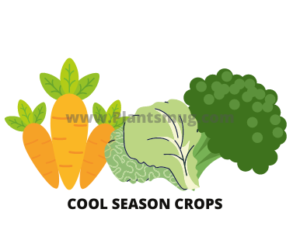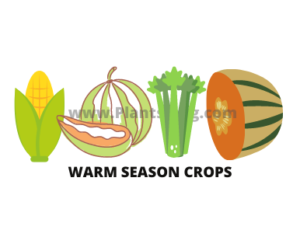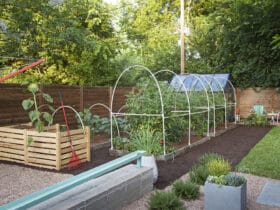Become a successful gardener as a beginner you need to differentiate between warm and cool season crops.
It is very important for you as a beginner that you can easily differentiate warm and cool season crops so have a clear idea of which plant is ideal and working great for a particular season.
There are more than two types of season crops that are grown all around the world but cools season crops and warm-season crops are the main two of them.
Table of Contents
Differentiate between warm and cool season crops:
Cool-season Crops:
Cool-season crops require a cool temperature around 50 to 60 °F for best-growing conditions.
These cool-season crops are easily handled frost without any major damage. They can easily tolerate cold weather and they planted as early spring vegetables.
Cool-season crops are planted during winter or cool-season and the cool temperature is very necessary for their growth and they are ready to harvest before the spring season comes.
Cool-season plants don’t require a large amount of sunlight and these crops are the first one to be planted in a garden year and then again in the fall.
Those cool-season crops are grown in the fall, they contain a higher amount of flavor and sugar content.
They don’t need too much amount of water in comparison to spring season crops.
Asparagus,broccoli,chives,cabbage,carrot,beets,onion,peas,spinach,leek,cauliflower, Brussels sprout etc are the examples of some common cool season crops.
Also Read: How to Care for Exotic Angel Plants With Best 5+ Tips
Warm Season crops:
Warm-season crops require an ideal temperature between around 65 to 95 °F for better growth.
These crops require high soil temperature and hot long days for better crop growth.
Warm-season crop seeds require a minimum of 65 °F temperature to germinate and the best planting time of these crops is mid to late spring.
Warm-season crops need more amount of water and care in comparison to cool season crops.
Long warm days and mild nights are the best ideal condition for the growth of these warm crops.
Melons, Beans, corn, cucumber, pepper, watermelon, eggplant, okra, squash, tomato are some examples of warm-season crops.
Warm-season crops are mostly affected by frost, they don’t have the capability to resist the frost or cold temperature.
Warm-season crops mainly stored for the winter season for consumption.
Conclusion:
After reading the article now you have a good idea of how to differentiate warm and cool season crops and what things you need to plant these crops according to season.
To become a successful gardener or a farmer you need to plan before starting planting season crops.
Also Read: Importance Of Plants (Benefits of Plants) Best 20+ Points








